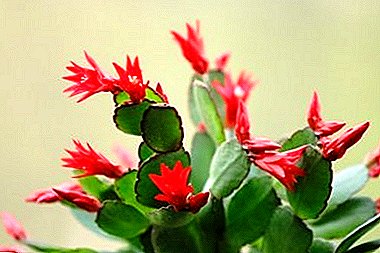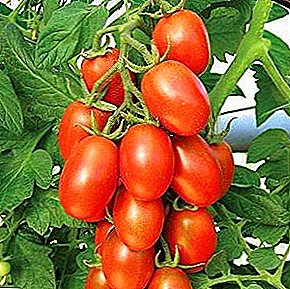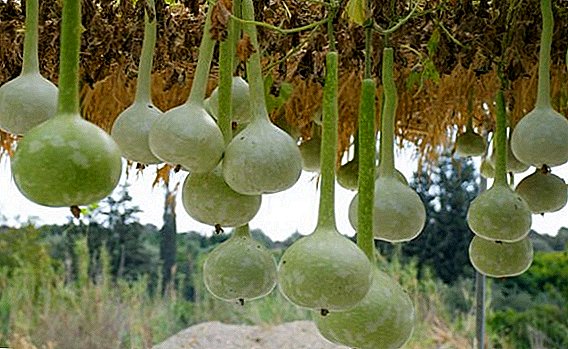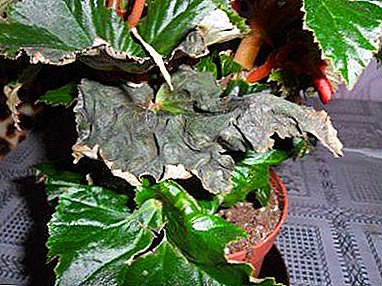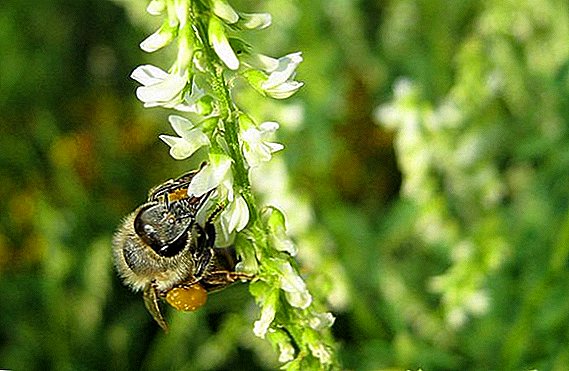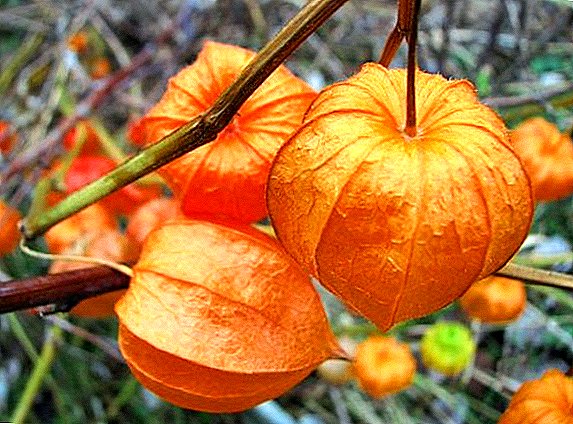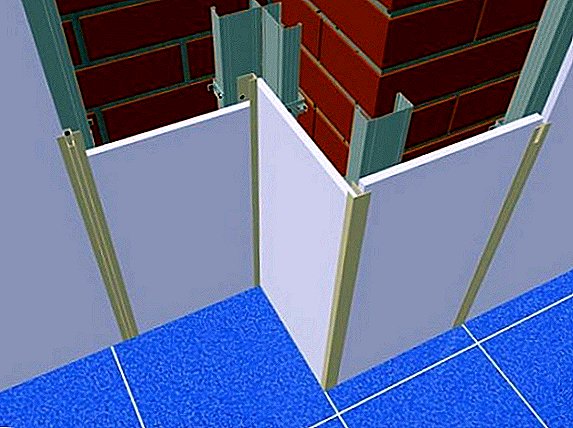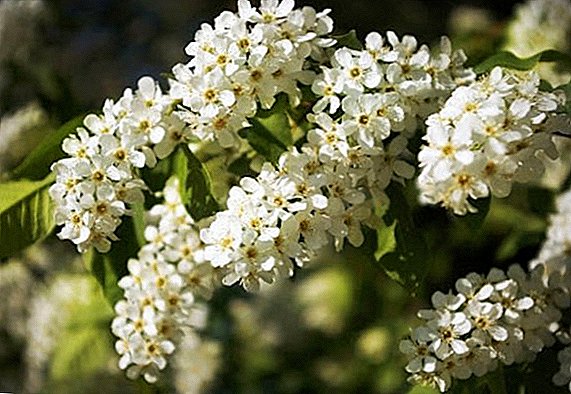 For many people, the bird cherry is always associated with the onset of spring, because it is her scent that fills the fresh spring air, and how the bird cherry blossoms, brings inspirational thoughts. This type of plant is extremely unpretentious to the selected soil, its quality, organic composition, as well as watering and lighting. Due to this, its care is quite simple and clear, and the result is always pleasant.
For many people, the bird cherry is always associated with the onset of spring, because it is her scent that fills the fresh spring air, and how the bird cherry blossoms, brings inspirational thoughts. This type of plant is extremely unpretentious to the selected soil, its quality, organic composition, as well as watering and lighting. Due to this, its care is quite simple and clear, and the result is always pleasant.
Planting bird cherry, in addition to obvious advantages, allows to refine and drain the soil on the backyard or summer cottage, which is why many gardeners want to know how to grow bird cherry and care for it. It does not require special skills and a lot of time - just follow the rules and recommendations presented below.
Prunus bird: description
The first mention of the bird cherry dates back to the times of the ancient Greek scholar Theophrastus. Bird cherry tree is known far beyond our state. For example, in Africa, Asia and Europe, it is considered one of the most attractive plants, perfectly suitable for decorating sites.  All varieties of bird cherry are deciduous trees (rarely shrubs) of the Pink family. Bird cherry is a fruit ornamental crop. Eleven bird cherry varieties are most widely spread in our region.
All varieties of bird cherry are deciduous trees (rarely shrubs) of the Pink family. Bird cherry is a fruit ornamental crop. Eleven bird cherry varieties are most widely spread in our region.
Did you know? This tree received its name due to the fact that after eating berries in the mouth of a person, there remains a blackish-purple patina.
The tree begins to actively bloom in April-May, dissolving white fragrant brushes. The inflorescences and fruits of bird cherry differ in small size, but at the same time they are extremely nutritious and saturated with sugar compounds and glycosides. Bird cherry tree is filled with useful properties and substances, due to which it is often used in medicine and cosmetology in one form or another.
Did you know? The world classification of plants refers cherry to the genus Plum. And for the ability to stand up to difficult climatic conditions and prolonged frosts the bird cherry was called the "Siberian plum" at all.
 It is important where the bird cherry grows.. This plant loves constant moisture. In the wild you can meet bird cherry in the temperate zone. It grows in dense forests, in wetlands or on the banks of rivers. It is noteworthy that in conditions of proper care and proper planting, the bird cherry can be planted in any dacha and backyard area of our country.
It is important where the bird cherry grows.. This plant loves constant moisture. In the wild you can meet bird cherry in the temperate zone. It grows in dense forests, in wetlands or on the banks of rivers. It is noteworthy that in conditions of proper care and proper planting, the bird cherry can be planted in any dacha and backyard area of our country.
A bird cherry is a bush or tree that can reach a height of up to 10-15 meters. The diameter of the crown of bird cherry can reach 5-7 meters. This plant is very unpretentious, which allows it to grow on any soil, regardless of its composition and level of acidity. In some cases, bird cherry can be found on sandy soil.
The tree has a massive, fast-growing root system. It is thanks to these properties People often planted bird cherry trees to create natural drainage of the land near the dwelling. Moreover, the bird cherry is able to improve the soil, and its falling foliage - to lower the acidity and increase the yield of the earth.
Choosing a place for planting bird cherry
Choosing a site for planting a bird cherry without exaggeration can be considered one of the most important stages, which predetermines the result of further growth of the tree. That is why you should carefully follow the recommendations based on the preferences of the bird cherry in relation to light and soil quality.
How much bird cherry need sunlight
 Due to the large size of the bird cherry, for proper growth and sufficient nutrition it should receive a large amount of sunlight.
Due to the large size of the bird cherry, for proper growth and sufficient nutrition it should receive a large amount of sunlight.
Thus, plant a tree preferably in well-lit areas.
Important! As a rule, young bird trees are more resistant, which allows them to withstand temporary light shading.
What soil likes bird cherry
This plant is quite unpretentious and steadfastly withstands cultivation in the soil of low quality, even in spite of the general acidity. but bird cherry grows better and grows faster in a loose, nutritious soil with a moderate level of humidity. To do this, before planting it is worth treating the soil, and after disembarking, ensure timely regular watering.
The basics of planting bird cherry in the garden
The uncapacity of the bird cherry in the care and the cultivation process largely attracts people, but the final result is determined at the planting stage. Errors and inaccuracies can be disastrous for the seedling. In order to properly plant a bird cherry in the spring, it is strongly recommended to follow simple but effective recommendations during the main stages of preparation and disembarkation.
How to prepare a landing hole for seedlings
Preparation of the landing pit is carried out in several stages. Its size should be at least 50 × 50 × 50 centimeters.
 This is due to the rapid development of the root system of the tree, the soil around which should be fertilized and loosened, which is done in the preparation process. The dug pit is watered abundantly, after which it should be layered in the following order: loose earth (5-7 cm), sawdust (3-5 cm), loose earth (15-20 cm). After each subsequent layer, it is desirable to add some water to the pit, perhaps even with nutrient solutions, fertilizers.
This is due to the rapid development of the root system of the tree, the soil around which should be fertilized and loosened, which is done in the preparation process. The dug pit is watered abundantly, after which it should be layered in the following order: loose earth (5-7 cm), sawdust (3-5 cm), loose earth (15-20 cm). After each subsequent layer, it is desirable to add some water to the pit, perhaps even with nutrient solutions, fertilizers.
Technology and scheme of planting bird cherry in the garden
The technology and scheme of planting bird cherry is quite simple and consists in compliance with just a few prescriptions.
First of all, you need to properly prepare the landing pit, preventing sand from entering it, since the bird cherry grows poorly in the sandy soil. In addition, the landing area should be well lit during the day, so that the sapling gets enough light. The distance between the trees should be at least 2 meters in radius.
Planted cuttings immersed in a prepared pit to a depth of 20-30 cm and evenly from all sides filled with loose soil.
 Every 10-15 cm of bulk soil can be poured with sawdust and plenty of water. After this, the pit should be carefully tamped.
Every 10-15 cm of bulk soil can be poured with sawdust and plenty of water. After this, the pit should be carefully tamped.
It is necessary to continue the backfill of the planting pit until the full strengthening of the bird cherry cutting and the formation of a small hill, which should later be poured and mulched with sawdust with peat.
Features of cultivation of bird cherry, how to care for the plant
The cultivation of bird cherry is quite simple and straightforward, and, equally important, does not require much time.
To obtain the desired result and the rapid cultivation of the tree, it is necessary to take into account not only the peculiarities of the region and the location of the land plot, but also recommendations regarding comprehensive bird cherry care.
How to water the plant
Watering should be carried out under the root of the tree, contributing twice a month to 20-30 liters of water for each plant.
In the most arid weather, it is also possible to additionally spray the leaves of the trees with clean water, thereby protecting them from drying. Depending on the weather and temperature, it is allowed to increase or decrease the volume of irrigation without changing its frequency.
Cherry Feeding Rules
Prunus, planting and care that rarely cause problems, sometimes also requires feeding. Fertilizer wood is not necessary, but still it helps to prevent diseases of the bird cherry and extend its life, so most gardeners invariably resort to fertilizing.
It is noteworthy that mineral and organic fertilizers are suitable for bird cherry. You can make them in the spring and autumn, but it is necessary to take into account seasonality. So, in the spring it is better to use saltpeter or urea, and in the autumn superphosphate and potassium salt.
 Top dressing needs to be brought directly under a root, preventing hit of fertilizer on leaves and young escapes. The concentration and volume of fertilizing should take into account the age and size of the tree, as well as the concentration of the substance. In this regard, you should unconditionally follow the recommendations on the packaging of fertilizer.
Top dressing needs to be brought directly under a root, preventing hit of fertilizer on leaves and young escapes. The concentration and volume of fertilizing should take into account the age and size of the tree, as well as the concentration of the substance. In this regard, you should unconditionally follow the recommendations on the packaging of fertilizer.
Important! For effective feeding in the first 3-4 days after fertilization should refrain from watering bird cherry.
Soil care
Care for the soil on which the bird cherry grows is obvious and applicable to other trees. So, first of all it is necessary to monitor the weeds, timely removing them. It is necessary to loosen the earth 1-2 times per season, preventing cracks and constantly keeping it moist.
Bird cherry pruning
Along with constant watering and timely feeding, bird cherry, care in the spring for which is reduced to a minimum, sometimes requires pruning. Pruning of bird cherry in spring and autumn is carried out after a thorough visual inspection of the tree for the presence of lesions, diseases and pest accumulation sites. Sick and damaged branches, as well as unnecessary growth, will certainly be removed.
 A separate option is forming trim. There are two ways of formation: in the form of a multi-trunk shrub and a tree on a high trunk. To create a bush, you need to cut the first tier at a height of about 70-80 cm. After the first shoots appear, only the most developed of them are left. It is noteworthy that for a more attractive view, it is desirable to leave the branches symmetrically to each other. In the same way, with an interval of six months or a year, the second and third tier are formed.
A separate option is forming trim. There are two ways of formation: in the form of a multi-trunk shrub and a tree on a high trunk. To create a bush, you need to cut the first tier at a height of about 70-80 cm. After the first shoots appear, only the most developed of them are left. It is noteworthy that for a more attractive view, it is desirable to leave the branches symmetrically to each other. In the same way, with an interval of six months or a year, the second and third tier are formed.
Formation of a high bole is done according to the same principle, but in this case the lower branches and shoots are removed. It is important to note that pruning bird cherry in the fall and spring should end with the treatment of log cabins with garden pitch.
How to propagate bird cherry in the garden
To obtain an acceptable result and further self-cultivation of this tree, you should know and understand how the bird cherry reproduces.
Breeding bird cherry is possible in many ways: seed or vegetative (cuttings, layering, offspring, grafting). Each of them positively proved itself and showed high efficiency.
 Propagation by seeds is more actively used for the species of bird cherry. In this case, the seeds are mined, carefully revealing the ripe fruit of the bird cherry, and then mixed with dry sand and stored in a cold place. Planted seeds are sown in autumn or early spring in moist fertilized soil. Depth of sowing 1-3 cm, depending on the soil looseness.
Propagation by seeds is more actively used for the species of bird cherry. In this case, the seeds are mined, carefully revealing the ripe fruit of the bird cherry, and then mixed with dry sand and stored in a cold place. Planted seeds are sown in autumn or early spring in moist fertilized soil. Depth of sowing 1-3 cm, depending on the soil looseness.
It should be noted that the seeds for spring sowing should be pre-stratified.
Important! Stratification of seeds significantly increases their resistance to difficult climatic conditions and diseases, as well as significantly increases the chance of germination. One should not neglect stratification, because it is precisely this that determines the success of the spring planting of the black cherry seeds.
Stratification should be carried out for 3-4 months in wet peat, moss, sand or a mixture of them at a temperature of from 0 to +5 ° С. During the whole time the substrate should be kept wet. Care of seedlings is simple and consists in timely watering, removing weeds and thinning to a distance of 5-10 cm. During the period of stratification, the plant has time to reach 40-50 cm in height, after which it can be planted in open ground in a permanent place.
For varietal bird cherries, they often apply budding with an eye (carried out in the second half of July) and improved copulation (during the spring), while using ordinary bird cherry seedlings as a stock.
Did you know? Experts and experienced gardeners use the leaves of bird cherry to fertilize the soil on their own plot. Caught in the soil and rotten leaves help reduce acidity and increase yields.
 A bird cherry must be planted when the weather allows it to set in - as soon as a stable temperature (above 10 ° C) and a constant humidity level are established. In the spring, the most correct is the planting of bird cherry in May. At the same time, it is important that the prepared landing pit should be of sufficient size to accommodate the root system of a tree without its breaks and bends. To improve growth, before planting a bird cherry, mineral and organic fertilizers can be applied to the soil of the pit, but not more than 20-30 g each.
A bird cherry must be planted when the weather allows it to set in - as soon as a stable temperature (above 10 ° C) and a constant humidity level are established. In the spring, the most correct is the planting of bird cherry in May. At the same time, it is important that the prepared landing pit should be of sufficient size to accommodate the root system of a tree without its breaks and bends. To improve growth, before planting a bird cherry, mineral and organic fertilizers can be applied to the soil of the pit, but not more than 20-30 g each.
Important! The root system of the bird cherry absorbs substances from the soil fairly quickly, so excess fertilizer can be dangerous. It is not necessary to feed the tree unnecessarily in the early stages.
The distance between bird cherry seedlings is determined for each variety individually, however, as a rule, it should not be less than 3-4 meters. Before planting, the crown of the tree should be cut to 65-75 cm. In the process of planting, the root system is filled with loose soil and, if available, sawdust. Periodically, the barrel should be shaken, and the ground around it gently rammed. In conclusion, the bird cherry should be plentifully watered, and the mulch should be mulched with a mixture of peat and sawdust.
Major pests and plant diseases
Bird-cherry is an extremely unpretentious plant that endures all the hardships and difficult climatic conditions of our region. In this regard, cases of the bird cherry or pest damage are rarely recorded. However, even despite this, experts identify the main types of pests and diseases that can affect this plant.
 Among the main diseases of bird cherry include leaf spot and fruit disease, which is caused by marsupials.
Among the main diseases of bird cherry include leaf spot and fruit disease, which is caused by marsupials.
In the case of a disease of a plant, all affected areas of the tree should be immediately removed, and the cut points should be treated with garden pitch.
The most common pests are moths, silkworm, weevil bugs, aphids and other pests. To combat them in early spring it is necessary to treat the bird cherry with concentrated extract of tobacco or soapy water. At the end of the flowering process of the plant should be repeated processing.
To improve flowering, it is advisable to spray the plant with a solution of the organic component preparations "Decis" or "Sherpa".
Important! It is from the timely and proper processing of bird cherry from pests and diseases that how much bird cherry lives. In view of this, it is extremely important to conduct a visual inspection of the plant at least once a season.
Bird cherry is considered to be an excellent choice for landing on its own site. Along with a set of useful properties, this plant also has a pleasant appearance. Moreover, the bird cherry, the cultivation and care of which does not require much trouble, can be planted on any soil, ennobling and fertilizing it.



